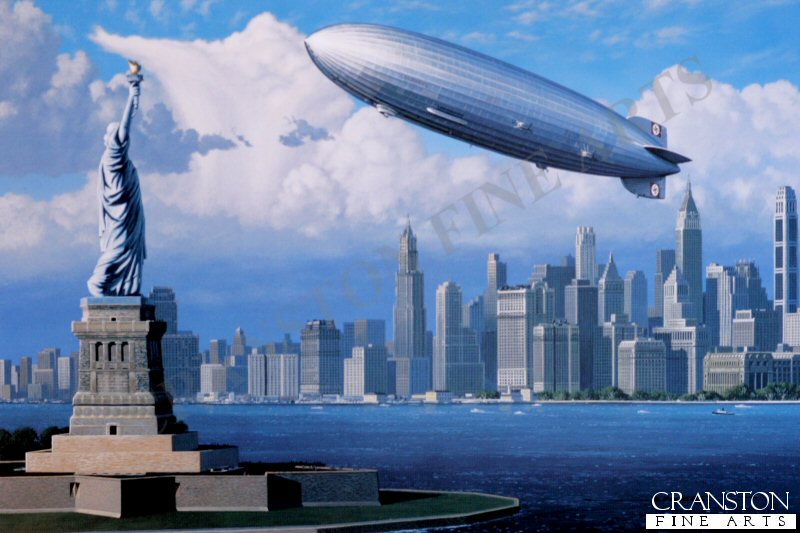- Sku:
- Vendor: Military Aviation Art Prints
Fateful Voyage by Stan Stokes. (B)
Construction of the dirigible Hindenburg began in 1931 in Friedrichshafen, Germany. The huge dirigible took nearly five years to complete. It was 804-feet long, and at its widest point was 135-feet in diameter. The Hindenburgs gas capacity (in 16 gas cells) was more than 7 million cubic feet. Each cell was coated with a gelatin solution to insure its permeability against the volatile hydrogen gas. The Hindenburgs frame was made of a special alloy of aluminum and copper. The Hindenburg was powered by four huge 16-cylinder diesel engines. Each engine provided 1300-HP of take off power, and 850-HP for sustained cruising. A navigation room in the control car contained two gyro compasses, a radio compass, and a telephone switchboard. The radio room was directly above the control car. In the bridge located in the control car were the controls for controlling the engines, releasing ballast or hydrogen, and in adjusting rudder or elevators. Each passenger had a 78 x 66 inch cabin consisting of an upper and lower berth, a folding wash basin, and a collapsible writing table with folding chair. Rooms were for sleeping as passengers spent most of their time elsewhere on the ship. The lounge was decorated with a huge mural and was fairly spacious. It included a baby grand piano. The reading and writing room was a quiet area where passengers could write letters, and the smoking room was the only area on the ship that smoking was permitted. Kept under positive air pressure no hydrogen could enter the smoking lounge. The largest space on the ship was the dining room with promenade. On May 6, 1936 the Hindenburg departed Germany with fifty passengers and a crew of fity-five on its maiden voyage to America. The aircraft reached the Naval Air Station at Lakehurst, New Jersey approximately 61 hours later. The huge ship was eased into her hangar, and the passengers disembarked for a short plane ride to Newark Airport. On its return trip the Hindenburg completed the journey in less than 49 hours, unprecendented in the days of long distance sea travel. The Hindenburg made ten round trip crossings in 1936. In 1937 the plans called for the Hindenburg to make 18 Atlantic crossings. The first of the 1937 trips began on May 3. Thirty-six passengers and a crew of sixty-one were onboard. Headwinds were very strong on this voyage and it took three full days to reach the New York area. It was late in the afternoon and thunderstorms were reported in the area. The Hindenburg made a courtesy sightseeing tour of Manhattan and at 7:00PM headed into Lakehurst for landing. At about 200-feet in altitude a tongue of flame appeared at the stern. It spread rapidly and within a few short seconds the Hindenburg was a giant fireball, falling to earth tail first. The catastrophe was covered by film and radio broadcasts, and to this day is one of the most devastating disasters ever recorded. Miraculously, there were a fair number of survivors, but the age of the dirigible was over.
Just two of this print edition now available.
Limited edition of 100 giclee art prints.
Size 21 inches x 14 inches (53cm x 36cm)
Have a question?

Fateful Voyage by Stan Stokes. (B)


